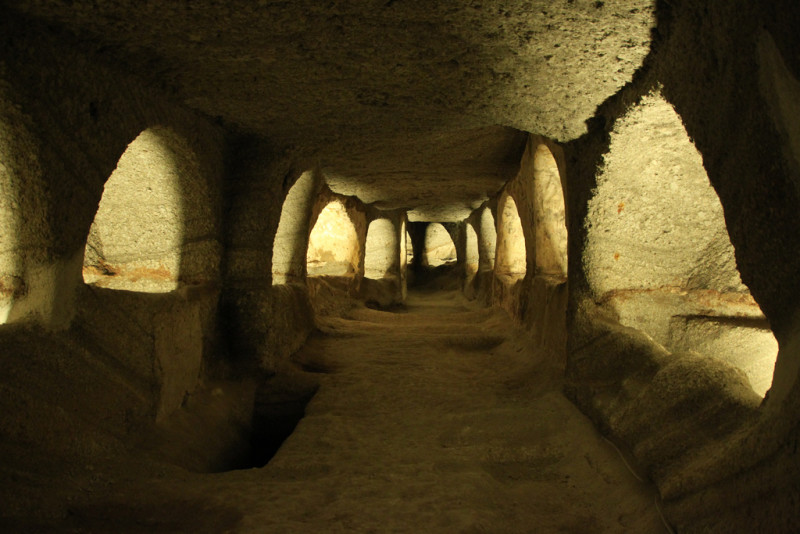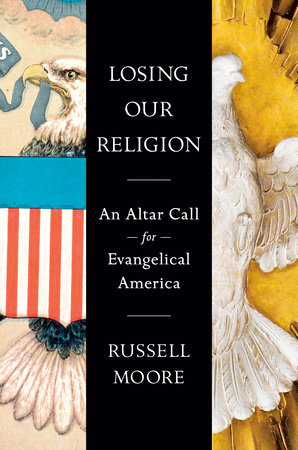Several years ago, I led a group of seminary students on a study tour of Rome, working through the Book of Romans and the relevant aspects of church history there. One rainy day we spent the morning in Saint John Lateran Cathedral there, and the afternoon in the ruins of the ancient Christian catacombs. I spent time alone from the crowds in both places, praying. As I did so, it struck me that we Christians sometimes forget the paradoxical grace of God in giving us a legacy of both cathedrals and catacombs.
The catacombs, of course, are the legacy of a tiny persecuted band of believers, meeting in their underground graveyards, to escape the all-seeing eye of imperial Rome. The cathedrals represent a very different turn, a church that not only grew in size but, in fact, outgrew and outlasted the Empire itself. The catacombs represent simplicity and earthiness; the cathedrals transcendence and wonder. We need them both.
I’ve noticed that American evangelicals who go on trips like this tend to be disappointed when they travel to sites of significance in church history. They want them to be a theme-park-like restoration of ‘the early church” in a way that makes it seem as though the faith went by time-warp straight from a pristine golden era to the Billy Graham crusades. This sort of Christian tends to like the catacombs for the same reason some people love working on their antebellum family histories but don’t like family reunions. The catacombs don’t talk back.
But the catacombs and the cathedrals, taken together remind us of two things we need to know: God’s sovereignty in sending down the faith, and the frailty of humanity as stewards of that faith. We can’t romanticize the early persecuted church. After all, the New Testament Scriptures are often rebuking those churches for precisely the things we lament in our churches today: sexual immorality, division, carnality, arrogance (1 Cor. 4:7-13; 5:1-8; 6:1-8). And if Christianity had remained in the catacombs, it is quite possible that you and I would never have encountered Christ.
The basilica at Saint John Lateran was planted there by the Emperor Constantine. As a Baptist committed to church/state separation, my skin crawls at the mention of Constantine. His vision of a Christian empire was, in my view, a failed experiment that led to persecution and to all sorts of nominal Christianity, which is the antithesis of my believers’ church conviction. And yet, God used Constantine to end a sometimes bloody persecution and to, among other things, call together the church to put down a deadly heresy or two. In the providence of God, the Trinitarian theism and the orthodox Christology with which I critique the idea of Christian empire came down to me due to the actions of the prototypical Christian emperor. Not to recognize that would be the sin of ingratitude.
Crawling through catacombs and walking through cathedrals reminded me of the paradoxical wonder of the way Jesus spoke of the kingdom of God. One the one hand, Jesus spoke of the kingdom as tiny, a “little flock” hounded by wolves (Lk. 12:32; Acts 2:29). The way is narrow, he told us, and there are few who enter therein (Matt. 7:14). On the other hand, Jesus told us the kingdom is like a tiny seed that grows into a massive tree in which all the birds of the air may rest (Mk. 4:30-32). If we only see the catacombs, we could valorize smallness and persecution as equivalent to holiness. And we could ignore our responsibility to build institutions and cultures to protect future generations from persecution. If we only see the cathedrals, whether of the ancient sort or of the local suburban megachurch, we could identity godliness with bigness, and authority with “influence.”
There’s a lot in church history that went wrong. The people who build the majestic cathedrals were sinners deserving of hell. So were the martyrs of the catacombs. So are we. Lots of bad decisions were made, and some of them persist. But the biblical story too was filled with sinful people making stupid decisions, and, in all that, God was working everything out toward the glory of Christ (Rom. 9:4-5). In the heroic episodes of the church’s story (Athanasius defeats Arius! Augustine turns back Pelagius! Bonheoffer stands down Hitler!) and in the awful parts (state churches and political preening and scandal after scandal), God is orchestrating a flow of the river of redemption, taking it from the hillsides of Judea through the bustling streets of Antioch right down to that place in Dubuque or Dubai or Buenos Aires or Little Rock, or wherever it was where you first heard the name of the Christ of God.
Seeing oneself as a prophetic minority does not mean retreat, and it certainly does not mean victim status. It also does not confer faithfulness. Marginalization can strip away from us the besetting sins of a majoritarian viewpoint, but it can bring others as well. We must remember our smallness but also our connectedness to a global, and indeed cosmic, reality. The kingdom of God is vast and tiny, universal and exclusive. Our story is that of a little flock and of an army, awesome with banners. Our legacy is a Christianity of persecution and proliferation, of catacombs and cathedrals. If we see ourselves as only a minority, we will be tempted to isolation. If we see ourselves only as a kingdom, we will be tempted toward triumphalism. We are, instead, a church. We are a minority with a message and a mission.
This article is adapted from my new book Onward: Engaging the Culture Without Losing the Gospel.
____________________________________
Photo: “Catacombs of Milos” by Klearchos Kapoutis, Flickr, Licensed under CC 2.0.







